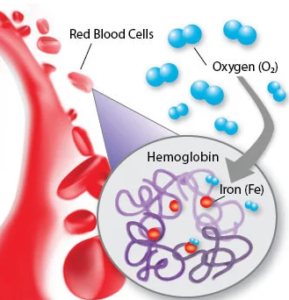-
Some considerations when returning to exercise
post-COVID.
Data shows COVID typically leaves the most significant stress on our cardio-respiratory system.
Outside typical short-lived flu-like symptoms, e.g. higher temperatures, body aches, and a sniffle, the most significant ill-health challenges appear to be respiratory-based.
Where does this leave exercise?
Typical COVID (starting) symptoms generally self-regulate activity. The natural challenges with (normal ) exercise (effort) and an active lifestyle instictively exist to prevent harm – mainly cardiovascular harm.
After initial limiting symptoms subside, and following a return to exercise, many people report:
🤧 I feel good at 70% of my maximum sustainable exercise effort but feel out of breath and tired when pressing up to my higher efforts.
🤧 I now require further recovery before I can exercise next.
🤧 Cognitively there's brain fog post-exercise.
🤧 Post-exercise lethargy increases my hunger for sweeter choices.
Here are some considerations when returning to exercise post COVID.
💓 Do not exceed your ‘easier and more conservative’ aerobic threshold until your recovery (speed) returns to normal.
💓 Here’s a formula to calculate your ideal heart rate ceiling - CLICK HERE
👃 Try nose-breathing only.
Nose breathing regulates against unnecessary higher exercise intensity and promotes a healthy hit of nitrate oxide.
-
The data shows your improving fitness!
Regular exercise at the right intensity will typically make work easier and improve performance.
Physical improvements are reasonably obvious, particularly when starting from a poor base.
However, if you like physiological analytics, which can help direct future training (and racing) and boost athletic confidence, here are the two ‘easy to test’ parameters I want to check.
1. Haemoglobin.
🩸 While genetics sets our starting point, the more you train your aerobic and anaerobic system, the higher your oxygen-carrying haemoglobin potential.

🩸 The higher your haemoglobin, the better the removal and buffering of the natural waste product, lactic acid. Also, with increasing haemoglobin you could expect a greater supply of ‘ready to go’ enduring energy.
🩸 My ‘average Haem count sits around 15 g/dL. With more committed training, I can expect about 17 g/dL.
2. Resting Blood Lactic Acid.
🩸 Cellular lactic acid is produced in the absence of oxygen. The harder you exercise, the higher the accumulation of lactic acid and the closer to limiting and ultimately stopping performance. The lower the fitness level the greater lactic acid with effort.
🩸 Therefore, the lower the lactic acid, particularly in committed activity, the better.

My interest lies in 'resting' lactic acid.
🩸Regardless of athletic talent, most people assess around 1.0-1.2 mmol/L.
🩸However, with training, the resting lactic acid typically lowers to around 0.8 mmol/L.
🩸 While this lowering number does not necessarily guarantee improved athletic performance, it relates to improved fat-burning metabolism.
🩸 Improved fat-burning metabolism relates to more prolonged efforts at a greater output and typically leads to ideal body weight.
Let me know if you’d like to check your numbers - CLICK HERE FOR THE FULL TEST
-
Can rain help us sleep better?
Albeit necessary, many recent rainy periods have made our lives more challenging.
However, Scientists suggest the one advantage is the improvement in our sleep quality,
Here’s why;
1. Lower air pressure.
With increasing water vapour, there is less overall oxygen, which typically makes our brains more tired.
2. Negative ions.
Rain causes an increase in negative ions, which can significantly improve and relax the neural, cardiovascular and respiratory systems. This may not be great if you’ve got a 10 am presentation, but fantastic for optimum sleeping conditions.
3. Sound.
Studies show the sound of rain induces alpha brain waves, perfect for 5 phase sleeping. The sound psychosomatically lowers body temperature, again ideal for the cosy best sleep.
4. Hormones.
Our prime sleeping hormone is melatonin. Reduced (sun) light promotes melatonin and its dosey influence. Overcast darker days prime the brain for a super booster of melatonin.
5. Shelter.
Finally, rain often regulates indoor living. Indoors for many means eat or sleep – or both.
If you have trouble sleeping, trial a rain-based sleeping app.
I swear by this practice – CLICK HERE
-
HR Monitors are still King.
Monitoring and policing your exercise effort is a great way to absorb your best bang for your training buck and avoid unnecessary pitfalls.
Monitoring your health, fitness, and athletic performance has never been more possible.
Nowadays, there are affordable and accurate gadgets galore.
Most data is easily uploaded for near-instant assessment.
Apps (including free versions) are typically the best mode to analyse your efforts and direct your future exercise and training sessions.
Some modes of analysing performance are:
🚲 Watts is the currency for cyclists, but runners can now tap into power progress.
🥵 Heat sensors - the better you can dispel rising exercise-induced heat, the better.
❤️ HRV sensors (e.g. Oura rings) – analysis of the heart rhythm and its relationship with residual neuro-transmitter-based stress.
🩸 Blood markers – haemoglobin, lactic acid & blood ketones.
However, my default is still, after 30 years, HR monitoring.
While I understand watts are an absolute work indicator, I favour gauging my optimum and most valuable intensity effort on HR feedback.
Somedays, your health, for whatever reason, can’t leak out a given power number.
Diet, stress, sleep, the weather, and immunology stress can influence your potential work on that day. Exceeding your given healthy threshold on that day could have a 'health' consequence. HR monitors can show health on the day.
e.g. With a higher than typical HR at a given workload, I would usually back off harder efforts on that day.
If I feel amazing, fitter, and motivated, my output, e.g. watts or pace, will be far greater at each HR zone.
I will push even harder if this is the case – knowing – I will absorb this work and take my fitness (and health) to another level.
I do love my GARMIN - CLICK HERE.

